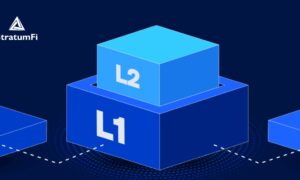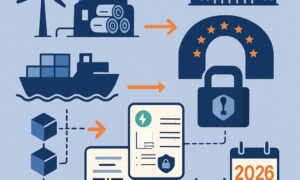Artificial Intelligence (AI) has become one of the most talked-about topics in business transformation. Every enterprise today is investing in AI tools, automation platforms, and analytics systems to improve speed and decision-making. But as AI adoption accelerates, one critical truth is emerging: technology alone is not a strategy.
Nowhere is this more evident than in procurement. While most organizations have adopted digital tools — from e-sourcing platforms to spend analytics dashboards — very few have a clearly defined AI strategy for procurement.
Procurement leaders often find themselves with a sophisticated tech stack that collects data and automates workflows, yet fails to deliver meaningful business outcomes. The missing link is strategy — the ability to align AI capabilities with procurement’s goals, values, and operating models.
This is why procurement needs its own AI strategy — one that moves beyond tools to create intelligence, autonomy, and measurable impact.
1. Technology Without Strategy Is Just Noise
In the race to digitize, many organizations fall into the trap of “technology-first” thinking. They implement multiple systems for sourcing, contracting, invoicing, and supplier management — but each operates in isolation. The result is a fragmented digital landscape where data is siloed, workflows are inconsistent, and users struggle with adoption.
This approach may automate individual tasks, but it does not transform procurement.
A true AI strategy starts by asking why, not what:
- Why does procurement exist in this organization?
- What strategic outcomes are we trying to achieve with AI?
- How can technology enable agility, risk reduction, and enterprise value — not just efficiency?
Without this clarity, even the most advanced AI tools will deliver limited ROI. AI becomes powerful only when it’s guided by purpose — when it aligns with procurement’s long-term vision.
2. Procurement’s Complexity Demands Specialized AI
Procurement isn’t like other business functions. It’s interconnected, regulatory-heavy, and deeply data-dependent. Every sourcing decision impacts suppliers, compliance, finance, and ESG performance.
Generic AI solutions — built for enterprise-wide analytics or automation — often fail to understand these unique nuances. Procurement requires domain-specific intelligence capable of interpreting complex data, policies, and stakeholder relationships.
That’s where Zycus’ Merlin AI Suite stands apart. Purpose-built for procurement, it embeds cognitive intelligence across the Source-to-Pay (S2P) cycle — from intelligent intake and supplier management to contract compliance and payment automation.
For example:
- Merlin Spend Analysis classifies spend data automatically and reveals savings opportunities.
- Merlin AI Intake understands requests in natural language and routes them to compliant workflows.
- Merlin Risk Monitor identifies supplier vulnerabilities using real-time insights.
- Merlin Contract Lifecycle Management (CLM) analyzes clauses, detects deviations, and enforces policy compliance.
This kind of specialized AI understands the language of procurement — not just data science.
3. AI in Procurement Is About Outcomes, Not Automation
Procurement’s value has evolved. It’s no longer just about cost savings or transactional efficiency — it’s about delivering measurable business outcomes such as agility, compliance, risk reduction, and innovation.
However, traditional automation focuses on process efficiency — “doing things faster.”
AI, when applied strategically, focuses on doing the right things better.
A procurement-specific AI strategy ensures that technology investments align with outcomes like:
- Strategic agility: AI agents predict market changes and adjust sourcing strategies proactively.
- Risk resilience: Machine learning models monitor supplier risk, disruptions, and compliance in real time.
- Value creation: Predictive analytics identify innovation partners and cost optimization opportunities.
- Stakeholder experience: AI-driven intake simplifies procurement for end users, making compliance effortless.
This approach is embodied in Zycus’ Intake-to-Outcomes (I2O) vision — where every procurement action is guided by intelligent orchestration and measured by its contribution to enterprise outcomes, not just process completion.
Explore Zycus’ Merlin Agentic AI Platform
4. Data Is the Fuel — Strategy Is the Engine
AI is only as strong as the data behind it. Many organizations collect massive volumes of procurement data — but lack the governance and integration needed to make it useful.
A strong AI strategy starts with data readiness. Procurement leaders must ensure data is:
- Unified: Integrated across sourcing, contracts, suppliers, and payments.
- Clean: Free from duplication and inaccuracies.
- Contextualized: Enriched with market intelligence and supplier insights.
- Governed: Managed with transparency, compliance, and ethical standards.
Zycus’ unified Source-to-Pay platform ensures that data flows seamlessly across every procurement touchpoint — enabling AI to learn, predict, and act effectively.
An AI strategy backed by clean, connected data turns procurement from a reporting function into an intelligence hub — capable of driving real-time, informed business decisions.
5. Human + AI Collaboration Is the Future
A common misconception is that AI will replace procurement professionals. In reality, AI augments human capabilities — handling routine tasks while empowering people to focus on strategy, innovation, and relationships.
A procurement-specific AI strategy defines this partnership clearly. It ensures that humans remain in control of judgment and ethics, while AI handles data processing, analysis, and execution.
For instance:
- AI can autonomously negotiate with suppliers within set parameters, but humans define the negotiation framework and objectives.
- AI can flag contract risks, but humans decide how to mitigate them.
- AI can process thousands of invoices instantly, but humans ensure supplier satisfaction and policy alignment.
This balance creates intelligent collaboration — where humans govern outcomes, and AI accelerates execution.
Zycus calls this model “Agentic AI” — a new paradigm where AI agents operate with governed autonomy while humans retain oversight and accountability.
6. Building a Procurement AI Strategy: Key Pillars
Developing a procurement-specific AI strategy requires a structured approach. Here are five foundational pillars to consider:
- Vision Alignment:
Define procurement’s strategic objectives — cost efficiency, risk resilience, ESG impact — and align AI initiatives to these goals.
- Data Infrastructure:
Establish a single source of truth by unifying spend, supplier, and contract data through an integrated platform like Zycus’ S2P suite.
- AI Integration:
Embed AI across workflows rather than in isolated tools. For example, integrate Merlin AI into sourcing, contracting, and supplier management simultaneously.
- Change Enablement:
Prepare teams for human-AI collaboration through training, governance, and communication.
- Measurement & Governance:
Define KPIs around adoption, cycle time reduction, savings, and risk mitigation. Ensure ethical and transparent AI governance.
When implemented together, these pillars turn AI from a technology project into a strategic enabler of business outcomes.
7. The Competitive Edge of a Procurement AI Strategy
By 2030, enterprises with a defined AI strategy for procurement will outpace competitors on agility, cost efficiency, and innovation.
Those relying solely on disconnected tools will struggle to achieve scale, compliance, and adaptability. The future will favor organizations that treat AI as a strategic partner, not just a software feature.
With its Merlin AI Suite and Intake-to-Outcomes framework, Zycus is empowering enterprises worldwide to design and execute their own AI strategies — turning procurement into an intelligent, autonomous, and outcome-driven function.
Conclusion: Procurement Needs a Strategy, Not Just Software
Procurement is at an inflection point. The next decade won’t be defined by who has the most technology, but by who uses AI most strategically.
An effective AI strategy for procurement integrates technology, data, and people into a cohesive framework that delivers measurable business outcomes. It’s not about having a tech stack — it’s about having a strategic roadmap for intelligence and autonomy.
With Zycus’ AI-powered Source-to-Pay solutions, organizations can move from fragmented automation to strategic orchestration — where procurement doesn’t just support the business but shapes its future.



































